“A Quick Run Through A Cemetery.” – Rod Serling
DIRECTED BY: JOHN BADHAM, JEANNOT SZWARC, JEFF COREY, ET AL
BLU-RAY STREET DATE: JULY 26, 2022 / KL STUDIO CLASSICS
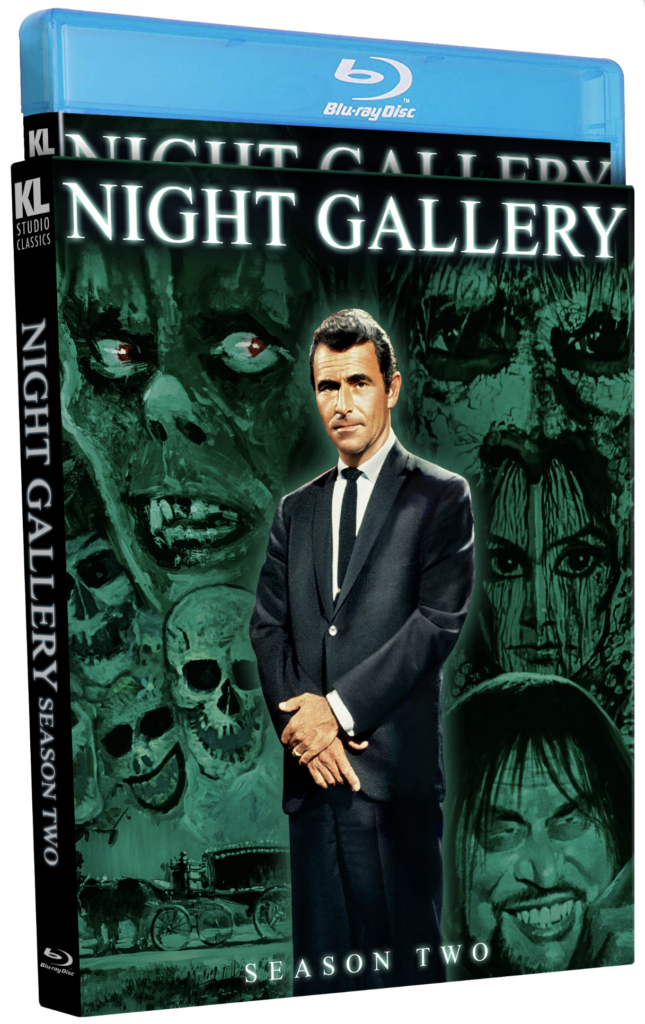
“Distance sweetens, does it not?” So asks collector Gingold (Ross Martin) to moneylender Sharsted (Rene Auberjonois) in “Camera Obscura”, one of the finer segments of a show that has itself sweetened with distance. We can look back at Night Gallery, sometimes called Rod Serling’s Night Gallery, from our fifty-year vantage and assume that everything inside that frame is the approval-stamped brainchild of the man whose sensibility was so deeply etched into five seasons of The Twilight Zone. But watching this otherwise watchable show is not to be construed as a dedicated extension of Serling’s genius. As he said himself in 1972, near the end of the show’s brief run, “They say it’s Rod Serling’s Night Gallery, but it isn’t really Rod Serling’s Night Gallery, it’s somebody else’s.” And that somebody was Jack Laird, a prolific producer and writer of television shows and TV movies across the ‘50s and ‘60s; by all accounts an imaginative, reclusive, and – in Serling’s case – combative man whose relative carte blanche from Universal Television effectively sidelined Serling to mostly his post as the all-time front man for each episode’s multiple segments, and sometimes contributor of scripts (20 of the season’s 62 segments).
Imagine the Serling-penned Twilight Zone episode, “The Bard”, featuring Shakespeare appearing in modern times and having to pass his work through the gauntlet of network suits and sponsors, and you get a little taste of what he must have felt here. While Serling, his clout in the world of heady science fiction preceding him, had hoped for a redux of The Twilight Zone’s social commentary or, at least to some measurable extent, the grace of intellectual heft, what Laird created was much more in line with Universal’s desire for straight gore and ghouls. The engine, more so than to make the viewer think, seems to be an uneasy blend of prodding horror nostalgia and the occasional generation of somber goosebumps. Said Serling, in typical bile-dappled verbosity: “The way the studio wants to show it, a character won’t be able to walk by a graveyard, he’ll have to be chased. They’re trying to turn it into Mannix with a shroud.”
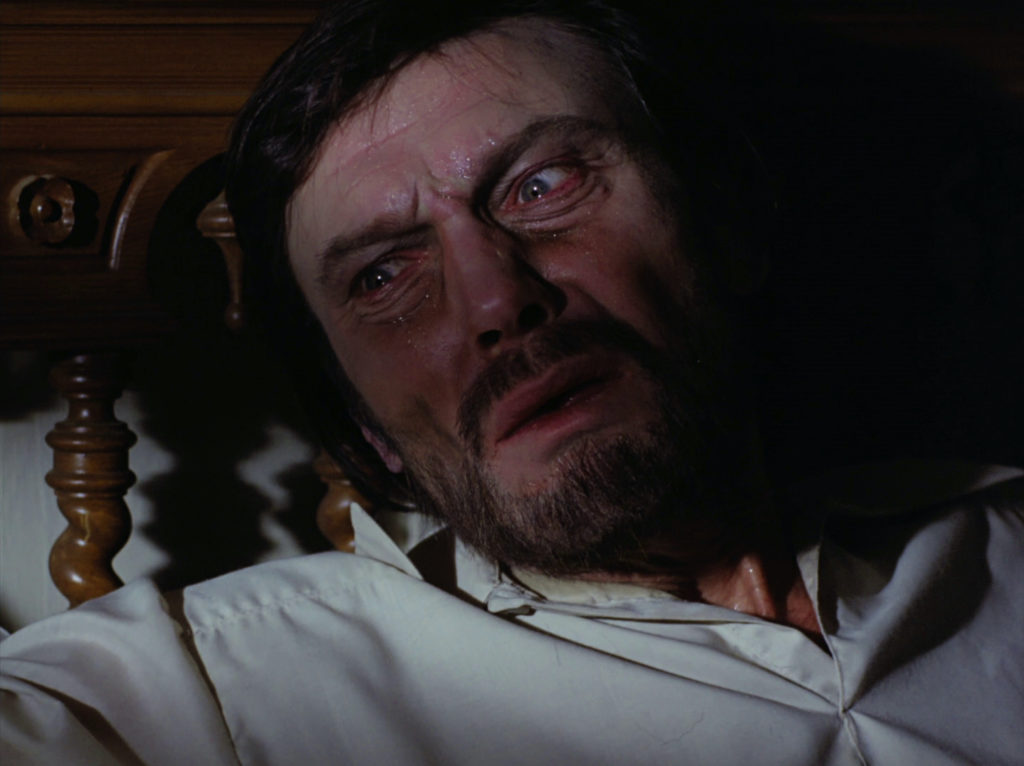
The most glaring of these sins, appearing first in this second season, is Laird’s creation of so-called “blackouts”, short, punchy, often overtly comic segments that were meant to balance out the running time: individual main stories varied in length, so any two might combine to make less than the show’s allotted hour, thus the need for intervening shorts, nearly all of which Serling found to be absurd, patent derailments of whatever sense of dread or horror was created by the main stories. He’s not wrong. The first blackout we see, in episode one, just after a segment that ends dourly with the assumed destruction of all of mankind (“The Boy Who Predicted Earthquakes”, by Serling), is a five-minute spoof showing a babysitter’s (Sue Lyon) slow realization that the house she’s calling on belongs to Dracula (Joseph Campanella) and his monstrously growling, offscreen baby. It’s the kind of stuff that feeds off the same impulse Mel Brooks and Gene Wilder would indulge in two years later with Young Frankenstein, but these Laird placeholders feature nothing so sly and smart as that.
Examples of one of the best and one of the worst “blackouts” can be found in season two’s ninth episode: worst is the barbarically inane “A Midnight Visit to the Neighborhood Blood Bank”, wherein Dracula (a common guest in the blackout wing of the Gallery) flies into a woman’s window in order to drain her neck of blood, only to have her wake and say “I gave at the office…”, whereupon Dracula slinks sadly back out the window; while among the best, droll and measured, even for its conceptual broadness, is John Astin in “Hell’s Bells” as an aging hippie who finds himself in that titular place, his eternal punishment presented to him by Satan himself (the writer-director of the episode, Theodore J. Flicker) as a small room with a boring old man droning on about the weather and a middle-aged couple just back from Tijuana with 8,500 slides ready for explication… Still forever in the column of tonal speed bump for the main proceedings, but on its own merits, a fun watch. In truth, a collection of just these quick-shot dollops of comedy-horror could have found its own audience, but butted against the more earnest stabs at genuine terror, they are too often cringe-inducing bathroom breaks.
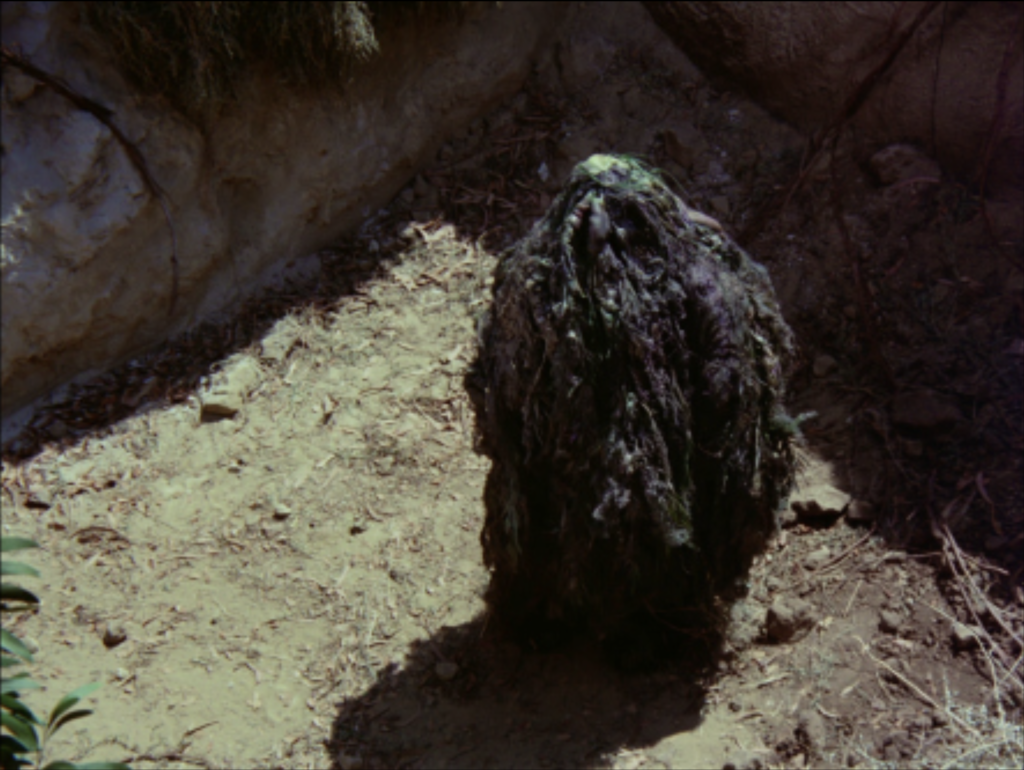
All of this notwithstanding, the show’s very brief run – one short season of 6 hour-long episodes, one full season of 22 hour-long episodes (the set reviewed here), and a final season of 15 half-hour episodes – still offers a heavy handful of segments worthy to ponder. One must say segments, rather than episodes, as the collection of segments in any given hour did not necessarily (and rarely did) add up to a solid praise-worthy episode, whereas individual segments periodically sprout up like orchids from the ribcage of a corpse. Season two, for instance, within its 22 episodes, carries 62 individual segments or stories, roughly half of which are disposable weekly fare, while the rest – some of them outlined below – represent a sliding scale of just-about-average to high-quality television.
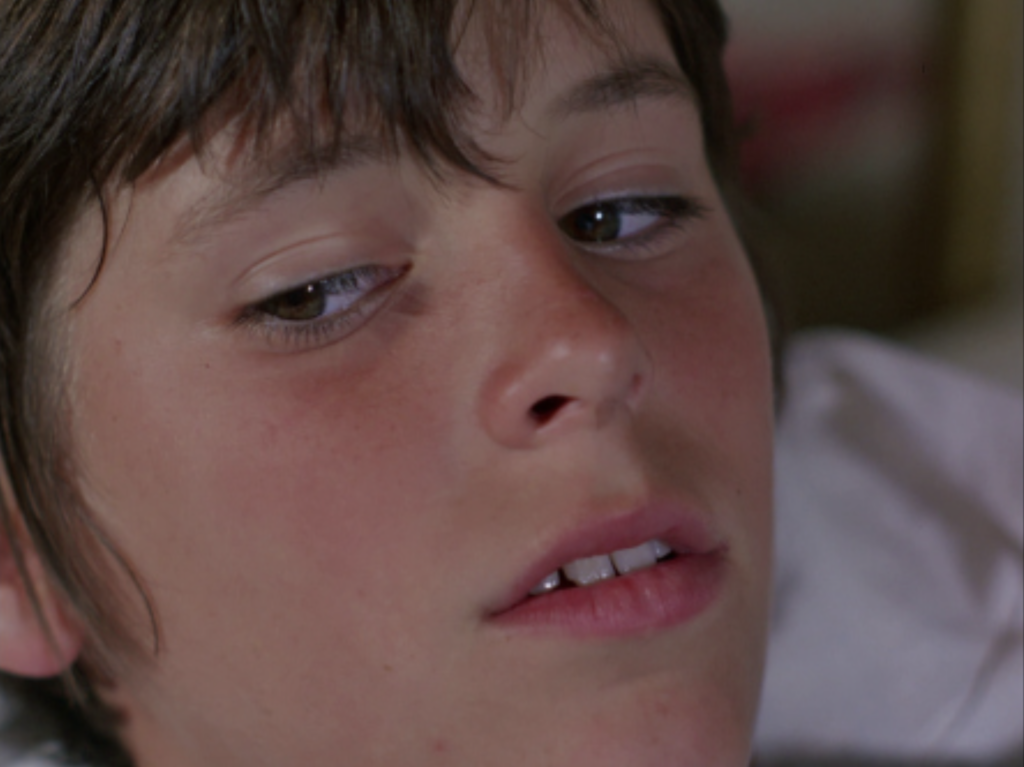
Like The Twilight Zone, Night Gallery often reached its highest self when dealing with either the travails of childhood or the regrets of adulthood. The former is covered exceedingly well in a triptych of segments across the season that includes the trenchant “Silent Snow, Secret Snow” (often cited as one of the pinnacles of series, with its dreamlike tale of a boy, played by Radames Pera, whose growing obsession with an approaching snowstorm stands in for his actually looming death, with narration by none other than Orson Welles, lending the segment an anchor of poetic gravitas that pulls you into the troubling melancholy of its central character), “Brenda” (about a young teenage girl – Laurie Prange, also providing commentary – who befriends a bizarre creature in the woods, one that is summarily hunted and buried alive by her father; when she returns a year later as a knowing, mature young woman, it’s clear that this buried creature is the manifestation of her burgeoning sexuality, feared and destroyed by those who would freeze her in eternal childhood), and “The Dark Boy” (a frontier piece recalling the ghost of a young boy, the producer’s son Michael Laird, who haunts the schoolhouse where he died, waiting against all hope for a reunion with his father). The latter theme, regretful adults, is dutifully enshrined by any number of episodes, the best of which includes “A Fear of Spiders” (wherein Patrick O’Neal is an aging, caddish Lothario confronted by his own shallowness in the form of a gradually growing spider in his apartment), “The Caterpillar” (a successful upgrade of the previous title that features Laurence Harvey as a roguish adventurer in Borneo who falls for his boss’s wife and gets his sexual comeuppance in the form of a dreaded earwig that burrows into his brain, driving him mad), and “Cool Air” (detailing Henry Darrow as a sensitive doctor battling to survive with only the aid of a self-built refrigeration device that has kept his body alive well past its actual death years ago, a fact discovered with much screaming bemusement by the only love [Barbara Rush] he might have ever found).
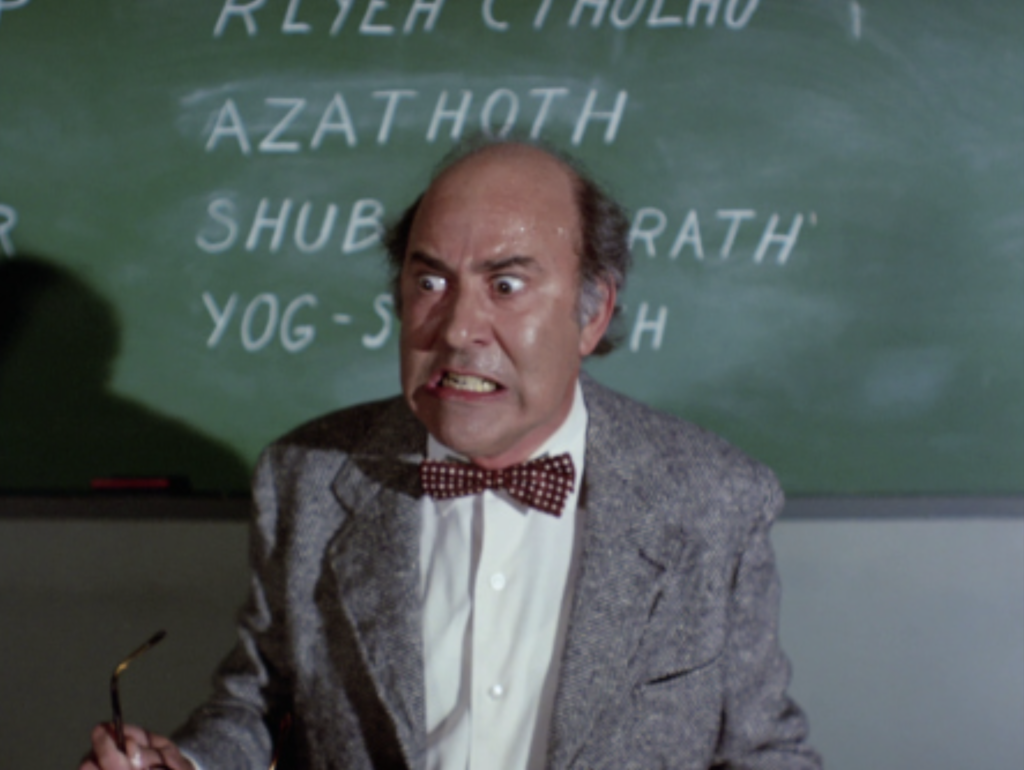
Many of these tales lean into their existence as clear, live-action embodiments of EC horror comics, complete with sinister turnabouts of fortune and fate for the presumptuously rich and the irredeemably smug: see the segments “Green Fingers” (greedy developer Cameron Mitchell is bested by rustic land-holdout Elsa Lanchester), “Dr. Stringfellow’s Rejuvinator” (a horror reworking of the supernaturally-tinged Twilight Zone episode “Dust”, here finding old west snake oil salesman Forest Tucker tracked by the ghost of an uncured girl), and “A Question of Fear” (Leslie Nielsen as a mercenary lured into a trap by the son of an old torture victim). But for those viewers whose preferences bend forever toward Serling’s former sandbox, science fiction, there are a number of examples that seem to defy the series’ usual tone of horror in favor of sci-fi tropes. The titular boy in “The Boy Who Predicted Earthquakes” (Clint Howard) has psychic powers; “Class of ’99” features Vincent Price as a professor in a classroom of life-like robots; “Tell David…” has time travel and a roomful of what would have been futuristic items in 1971; “The Different Ones” allows a physically deformed teenager (Jon Korkes) to travel to another planet; and the above-mentioned “Camera Obscura” – another often cited as among the best of the series – revolves around a device that can show its user scenes from the past. It should be noted, “Tell David…” and “The Different Ones” are back-to-back sci-fi segments in the same episode, perhaps leading some original viewers to wonder if they themselves had traveled back in time to The Twilight Zone.
Finally, as testament to that which may not have been intentional, it’s fitting that the season’s first segment, “The Boy Who Predicted Earthquakes”, tees up the destruction of the entire world without actually showing it, while the final episode of this set, the moody-if-rushed segment “Little Girl Lost”, fulfills somewhat appropriately the season’s consistent theme of personal, often self-inflicted doom with a barrage of images of total nuclear destruction.
Kino Lorber’s presentation of season two, like their previous season one offering, is prettily and densely jam-packed with dissertation-level extras, including commentaries (sometimes two) on each of the 22 episodes. These include insightful and articulate Rod Serling/Night Gallery experts ranging from authors to actors to renowned filmmakers like Guillermo Del Toro (from a previous, non-Kino Lorber DVD issue of the show) and John Badham (new to this collection, covering his various directed episodes), while the 2K restoration quite frankly raises much of the show’s visual strengths from the dead (see: the ultimate in Bava-inspired darkness and doom, “Sins of the Father”). Meanwhile, part two of Craig Beam’s “The Syndication Conundrum: Night Gallery’s Horrific Second Life in Reruns” (part one is on Kino Lorber’s season one set) focuses on the essential editorial maiming of many segments to accommodate the show’s reincarnated life in half-hour episodes instead of their original hour-long berth. These extras, along with various TV spots, the 2008 retrospective featurette “Revisiting the Gallery” (interviews with many original actors, directors, and other crew), and a dedicated look at Tom Wright’s evocative paintings used in Serling’s segment intros, make for about as complete a dive into the history and legacy of Night Gallery as you could imagine watching deep into the darkness after midnight.
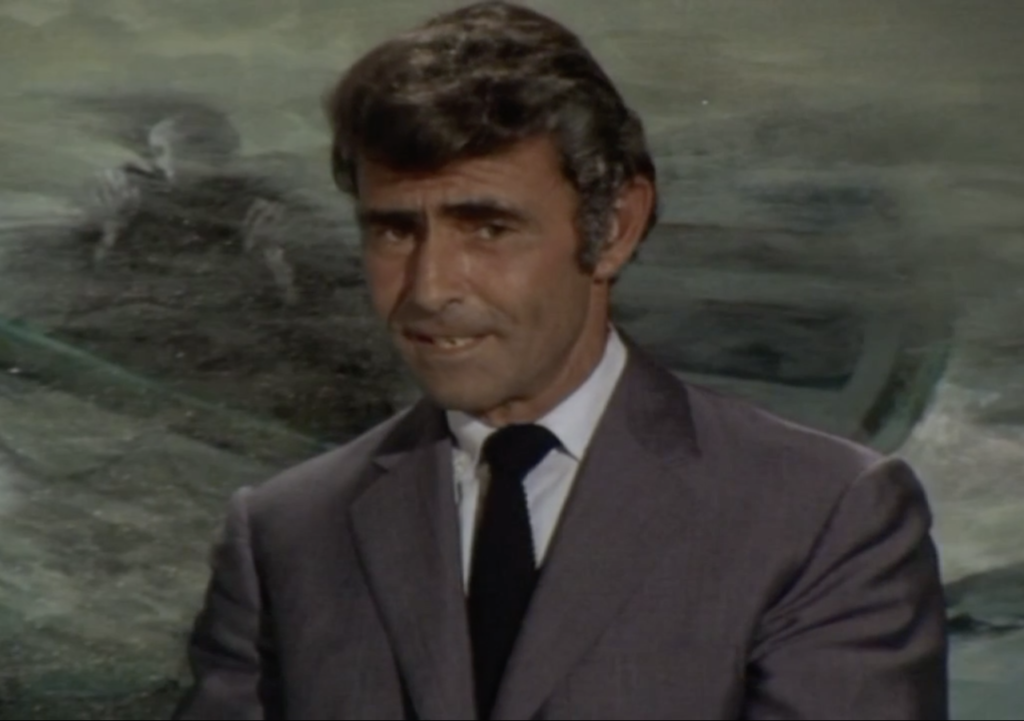
Images courtesy of DVDBeaver.com.

